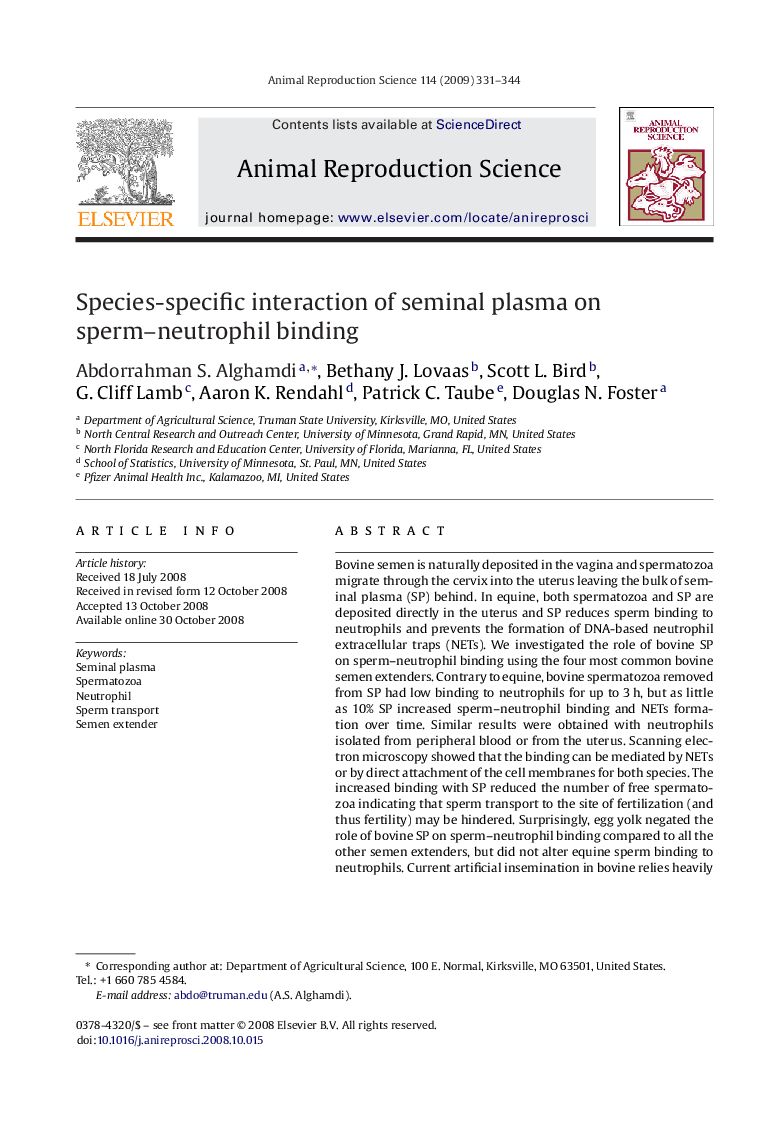| Article ID | Journal | Published Year | Pages | File Type |
|---|---|---|---|---|
| 2074260 | Animal Reproduction Science | 2009 | 14 Pages |
Bovine semen is naturally deposited in the vagina and spermatozoa migrate through the cervix into the uterus leaving the bulk of seminal plasma (SP) behind. In equine, both spermatozoa and SP are deposited directly in the uterus and SP reduces sperm binding to neutrophils and prevents the formation of DNA-based neutrophil extracellular traps (NETs). We investigated the role of bovine SP on sperm–neutrophil binding using the four most common bovine semen extenders. Contrary to equine, bovine spermatozoa removed from SP had low binding to neutrophils for up to 3 h, but as little as 10% SP increased sperm–neutrophil binding and NETs formation over time. Similar results were obtained with neutrophils isolated from peripheral blood or from the uterus. Scanning electron microscopy showed that the binding can be mediated by NETs or by direct attachment of the cell membranes for both species. The increased binding with SP reduced the number of free spermatozoa indicating that sperm transport to the site of fertilization (and thus fertility) may be hindered. Surprisingly, egg yolk negated the role of bovine SP on sperm–neutrophil binding compared to all the other semen extenders, but did not alter equine sperm binding to neutrophils. Current artificial insemination in bovine relies heavily on egg yolk extender and introduces variable amounts of SP into the uterus, which naturally remains in the vagina. Our results indicate a need to re-evaluate the composition of semen extenders and the semen processing procedures in relation to sperm transport, longevity and fertilizing ability.
